Nestled in the picturesque Val d’Orcia in Southern Tuscany lies Bagno Vignoni, a magical village with a history stretching back to Etruscan times.
The first time I visited this hidden gem, I was mesmerized by its unique centerpiece – a massive 50 by 30-meter stone basin filled with steaming thermal waters that have been flowing continuously for centuries. These natural hot springs reach temperatures of 49 degrees Celsius and have attracted visitors seeking healing properties for arthritis, rheumatism, and skin conditions since ancient Roman times.
Walking through this Renaissance village feels like stepping back in time, with the thermal waters playing a central role in both the landscape and culture. I’ve found that unlike many popular Tuscan destinations, Bagno Vignoni offers a more authentic experience away from overwhelming crowds.
The thermal baths here aren’t just a tourist attraction but a living connection to history, where Roman engineering meets medieval architecture in a setting that Lorenzo de’ Medici himself once visited.
What makes Bagno Vignoni truly special is how it combines wellness with cultural richness. During my explorations, I discovered that beyond the main square’s impressive water basin, there are several spots where you can actually soak in these healing waters.
The village’s intimate scale means you can easily spend a day exploring its charming corners, enjoying the thermal facilities, and sampling local cuisine – all while being surrounded by the breathtaking Tuscan countryside that has inspired artists for generations.

History and Cultural Significance of Bagno Vignoni
The thermal waters of Bagno Vignoni have drawn visitors for thousands of years, making this small Tuscan village a place where history flows as steadily as its warm springs. The unique stone basin in the town center tells a story that spans from ancient civilizations to Renaissance nobles.
Ancient Beginnings and Roman Influences
The story of Bagno Vignoni begins long before written records. Etruscans were the first to discover these healing waters, using them for both cleansing and medicinal purposes. When Romans arrived, they did what they did best – they built elaborate baths and villas around the thermal springs.
I found it fascinating how the Romans recognized the therapeutic qualities of these volcanic waters. They created a bathing culture here that laid the foundation for centuries of wellness practices. The 49°C water (about 120°F) has been flowing continuously since those ancient times.
Walking through Bagno Vignoni today, I can still feel this Roman influence in the stone architecture and bathing traditions that have survived for millennia.

Pope Pius II and the Renaissance
During the Renaissance, Bagno Vignoni gained even greater prominence when Pope Pius II frequently visited to soak in its healing waters. His presence transformed this small village into a fashionable retreat for nobility and intellectuals.
The Pope’s visits are documented in his memoirs, where he praises the curative properties of the springs. Renaissance-era buildings still stand around the central piazza, reminding me of this golden age.
Noble families built elegant accommodations nearby, and the thermal baths became an important stopping point on the Via Francigena pilgrimage route. The 50 by 30-meter stone basin that dominates the town center today dates from this Renaissance period.

Literary and Artistic References Over Time
Bagno Vignoni’s unique beauty and healing reputation have inspired artists and writers throughout history. The village appears in numerous paintings, capturing its otherworldly steam rising from the central pool against the backdrop of rolling Tuscan hills.
I was surprised to learn how many literary figures have mentioned these baths in their works. The medieval atmosphere and therapeutic waters created a perfect setting for poetry and prose.
In modern times, filmmaker Andrei Tarkovsky immortalized Bagno Vignoni in his 1983 film “Nostalghia,” featuring scenes around the central bath. This artistic legacy continues today, with the village inspiring photographers, painters, and writers who visit.
The village remains largely unchanged, preserving its cultural significance as a place where art, wellness, and history blend together in the steaming waters.

Exploring the Thermal Springs
Bagno Vignoni’s thermal waters are truly special, with ancient origins and modern appeal. These remarkable springs have attracted visitors from Roman times to the present day, offering both natural beauty and therapeutic benefits.
Geothermal Wonders of the Val d’Orcia
The thermal springs of Bagno Vignoni represent one of the Val d’Orcia’s most fascinating natural phenomena. I was amazed to discover that the main pool measures about 49 meters long and 29 meters wide, with hot water bubbling up naturally from underground sources.
These springs originate from geothermal activity deep beneath the Tuscan landscape. The water travels through layers of mineral-rich rock before emerging at around 52°C (125°F).
Walking around the Renaissance-era piazza built directly over the original source is like stepping back in time. The Etruscans were likely the first to use these waters, followed by the Romans who recognized their special properties.
During my visit, I noticed steam rising from the waters, creating a mystical atmosphere especially during cooler mornings and evenings.

Health Benefits of Mineral-Rich Waters
The thermal waters here aren’t just beautiful—they’re renowned for their therapeutic qualities. Rich in minerals like sulfur, calcium, and magnesium, these waters have been used for centuries to treat various ailments.
I spoke with locals who swear by the springs for relieving:
- Arthritis and joint pain
- Rheumatism
- Skin conditions
- Respiratory issues
- Muscle tension
The high mineral content creates a unique bathing experience that leaves skin feeling soft and rejuvenated. During my soak, I noticed the water has a distinct silky texture unlike ordinary water.
Many visitors plan extended stays to fully experience the healing benefits. The typical recommended treatment involves daily soaking for 1-2 weeks.

Varieties of Thermal Pools and Spas
Bagno Vignoni offers various ways to enjoy its healing waters. While the historic central pool is now primarily for viewing, several excellent facilities around the village provide full thermal experiences.
I recommend trying:
- Terme di Bagno Vignoni: Modern facilities with multiple pools at different temperatures
- Parco dei Mulini: Natural pools formed in the old mill area below the village
- Hotel Adler Thermae: Luxury spa complex with indoor and outdoor thermal pools
The free-access pools at Parco dei Mulini were my personal favorite. I loved soaking my feet in the warm, mineral-rich water while enjoying stunning views of the Val d’Orcia countryside.
Each facility offers unique experiences—from simple rustic pools to full spa treatments utilizing the local thermal waters.
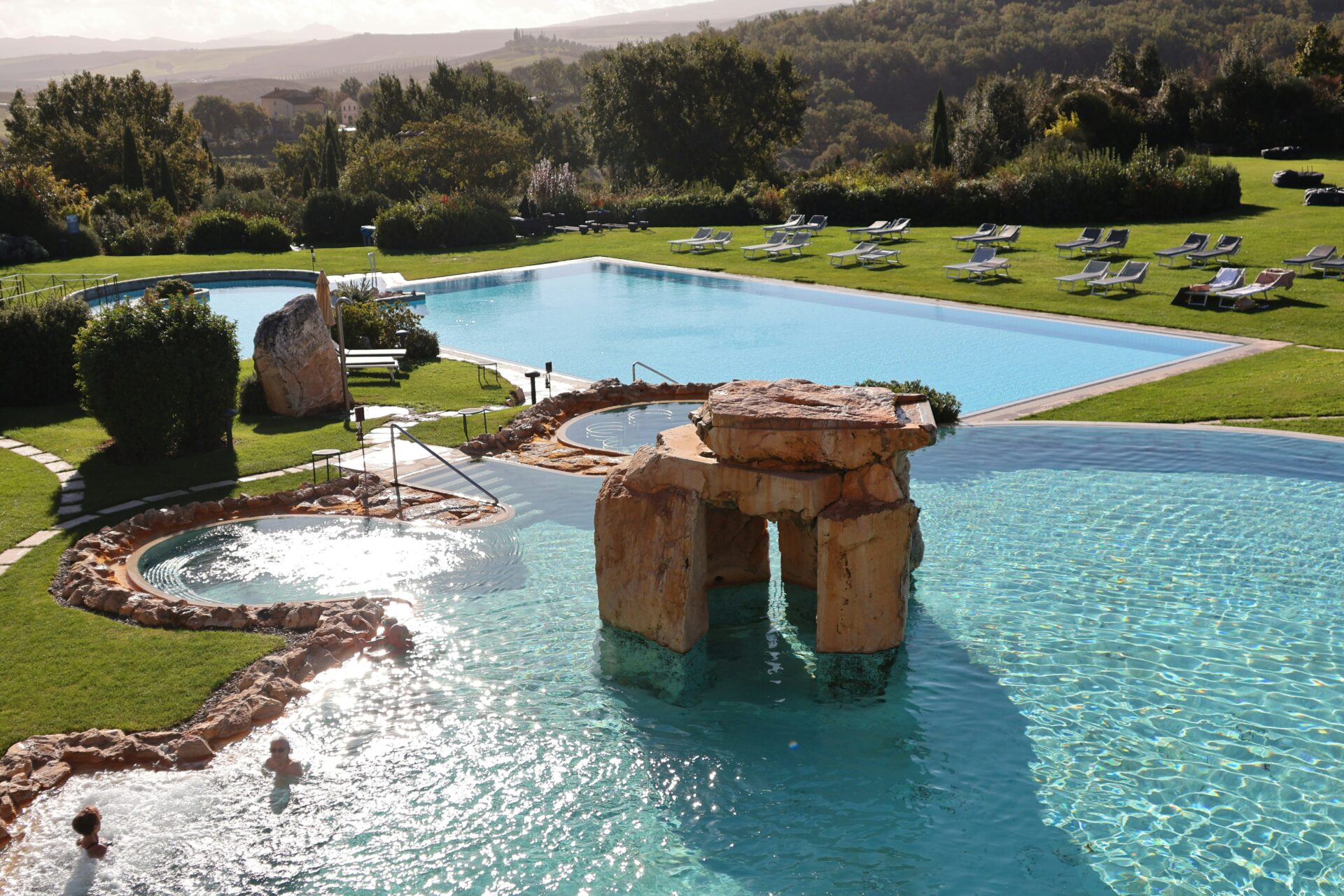
The Wellness Journey: Spa and Therapy Experiences
Bagno Vignoni offers a remarkable blend of ancient healing traditions and modern wellness approaches. The thermal waters that have attracted visitors since Roman times now fuel a variety of therapeutic experiences.
Traditional and Modern Spa Treatments
At Adler Spa Resort Thermae, I discovered an impressive range of treatments that combine local traditions with contemporary techniques. Their signature mud wraps use thermal clay from the surrounding area, rich in minerals that work wonders for joint pain.
Hotel Posta Marcucci offers more traditional treatments that haven’t changed much in centuries. Their classic massage with olive oil infused with local herbs left my skin glowing for days.
Most spas in the area offer facial treatments using thermal water, which is particularly beneficial for skin conditions. The high sulfur content helps treat acne and eczema.
I was surprised by the affordability of basic treatments, starting around €60 for a 50-minute massage or facial. For the best experience, I recommend booking at least a day in advance.
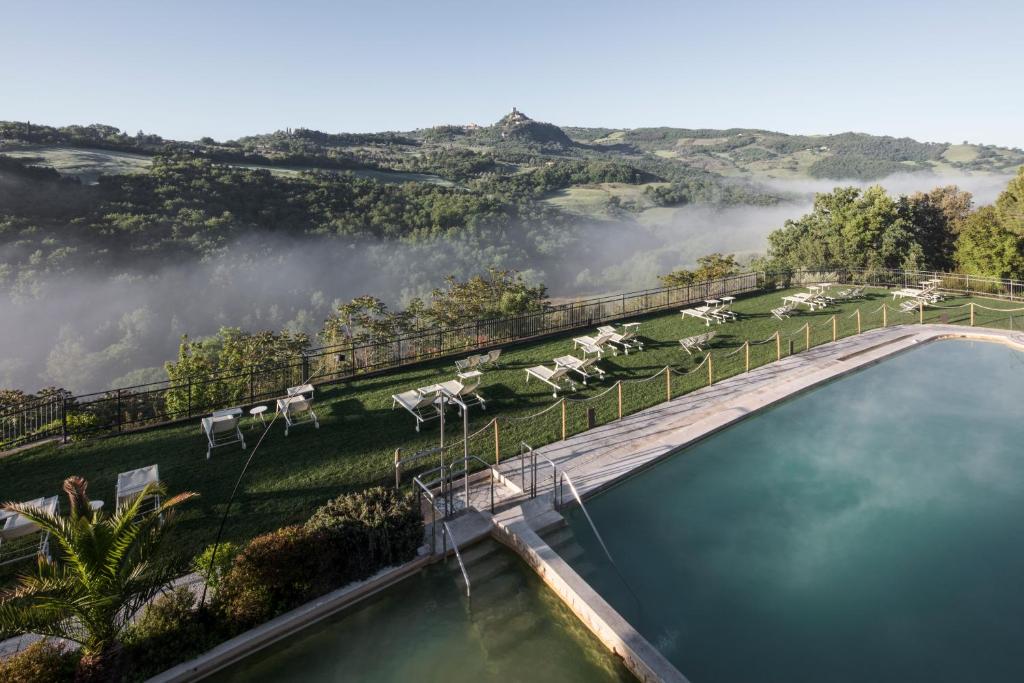
Specialized Wellness Programs
Many resorts offer multi-day wellness programs tailored to specific needs. At Adler Spa, their “Tuscan Detox” program combines thermal baths, massage, and a diet featuring local organic produce.
Hotel Posta Marcucci specializes in arthritis and mobility programs that have helped countless visitors. Their weeklong therapy includes daily thermal soaks and specialized physiotherapy.
For those seeking stress relief, several spas offer meditation and mindfulness retreats. These programs typically include:
- Morning yoga sessions overlooking the Val d’Orcia
- Guided meditation in thermal pools
- Stress-management workshops
- Healthy cooking classes
These programs range from 3-7 days and provide a more immersive healing experience than single treatments.

Thermal Water Therapy and Relaxation Techniques
The thermal waters of Bagno Vignoni maintain a constant temperature of about 49°C (120°F) and are rich in minerals like calcium, magnesium, and sulfur. These properties make them ideal for treating:
- Rheumatic conditions
- Muscle tension
- Skin disorders
- Respiratory issues
I spent hours in the outdoor pools at Posta Marcucci, where the water’s natural buoyancy relieved pressure on my joints. The contrast therapy—alternating between hot thermal pools and cool plunge pools—improved my circulation dramatically.
Many locals recommended “floating meditation,” where you simply float in the mineral-rich waters while practicing mindfulness. This technique dates back centuries and remains one of the most effective relaxation methods.
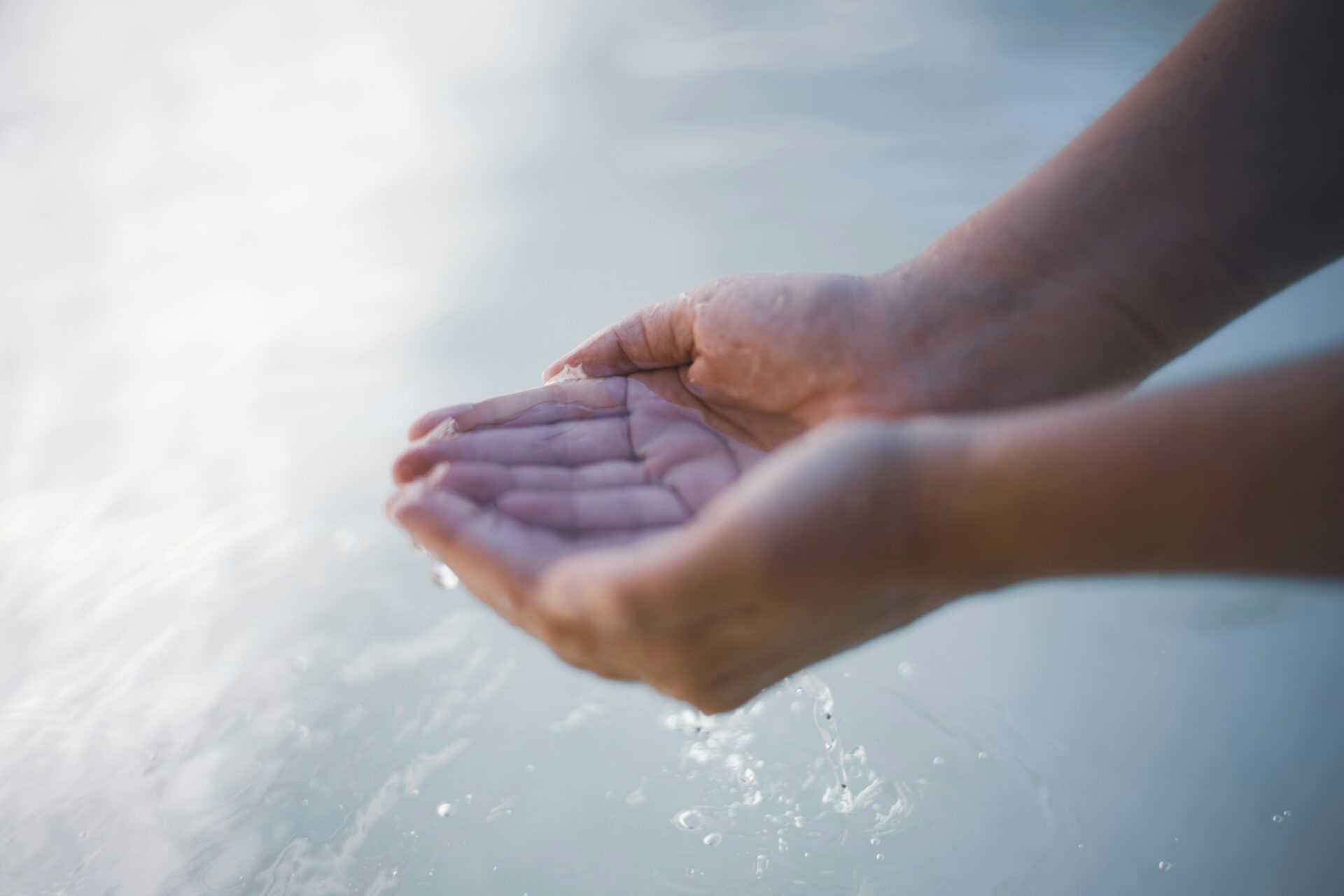
Savoring the Flavors of Tuscany
No visit to Bagno Vignoni is complete without experiencing the incredible food and wine that define Tuscan culture. The Val d’Orcia region offers some of Italy’s most celebrated culinary treasures, from robust wines to fragrant olive oils.
Local Tuscan Cuisine and Gastronomy
The medieval villages surrounding Bagno Vignoni offer authentic dining experiences that I find simply unforgettable. Traditional Tuscan cooking emphasizes simplicity and quality ingredients above all else.
When I visit, I always order pici – thick, hand-rolled pasta typically served with wild boar ragù or simple garlic sauce. The pasta is heartier than what you’ll find in other Italian regions.
Local cheeses are another highlight. I recommend trying Pecorino di Pienza, a sheep’s milk cheese that ranges from fresh to aged varieties. The aged versions have a nutty, complex flavor that pairs beautifully with local honey.
Many restaurants in the area serve ribollita, a hearty bread soup made with vegetables and beans. It’s comfort food at its finest, especially during cooler months.

Wine Tasting Experiences in Montalcino and Montepulciano
Just a short drive from Bagno Vignoni lie two of Italy’s most prestigious wine regions. Montalcino is the birthplace of Brunello, one of Italy’s most celebrated red wines.
I suggest scheduling a tour at a family-run vineyard where you can learn about the strict production methods that make Brunello so special. Most vineyards offer tastings with magnificent views of the countryside.
Montepulciano, another medieval hilltop town nearby, produces the excellent Vino Nobile di Montepulciano. This robust red has been enjoyed since Renaissance times.
Many wineries offer guided tastings that include food pairings with local cheeses and cured meats. The experience of sipping these powerful reds while overlooking the same vineyards where they’re produced is truly special.
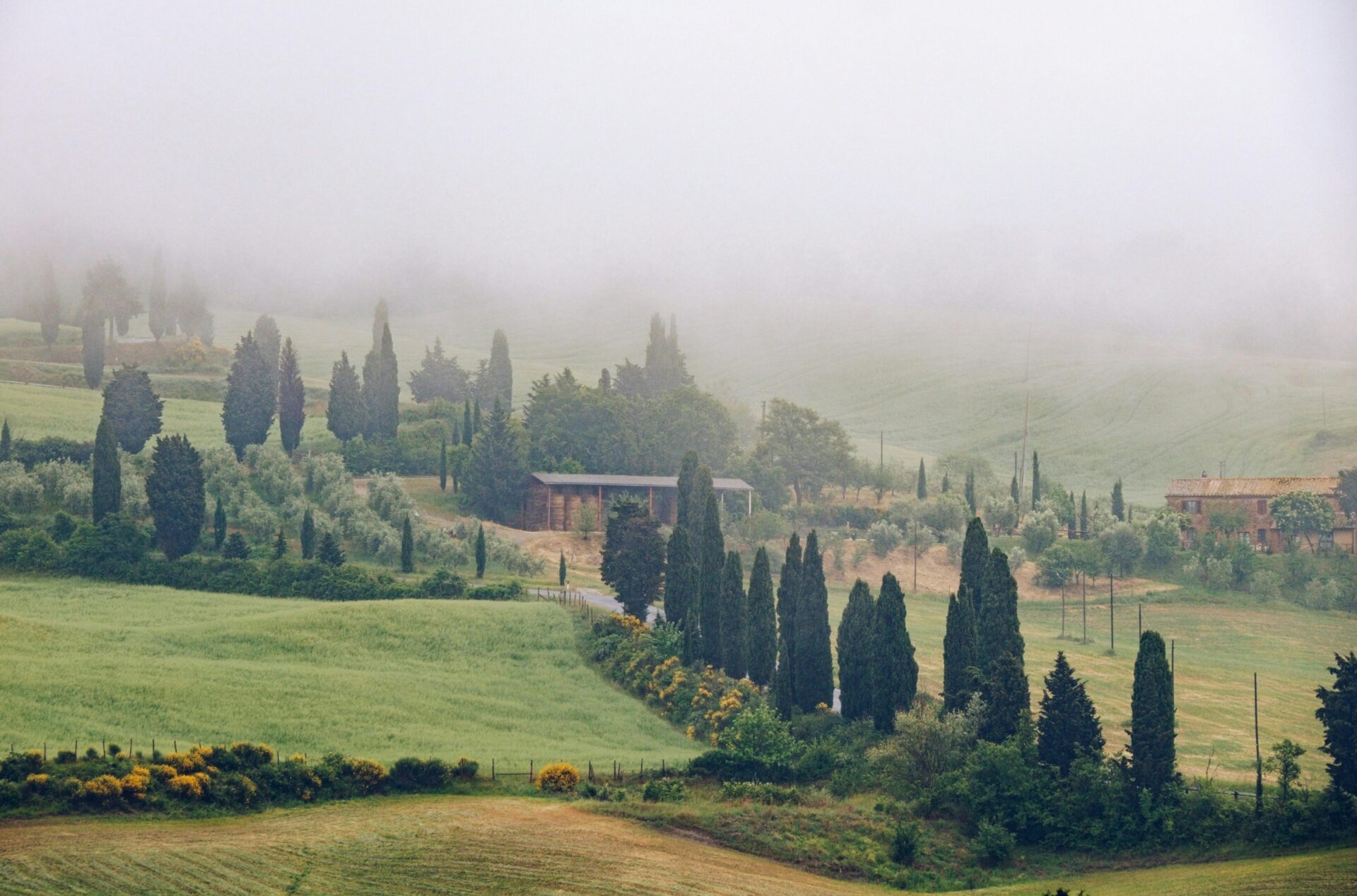
Tuscan Olive Oil and Regional Specialties
Olive groves dot the landscape around Bagno Vignoni, producing some of Italy’s finest extra virgin olive oils. The local oil has a distinctive peppery finish that tingles at the back of your throat.
I always make time for an olive oil tasting at a local farm. November is harvest season, when you can witness the pressing process firsthand. Fresh oil has an intense green color and grassy aroma you won’t find in commercial versions.
Don’t miss trying cinta senese pork, a heritage breed raised in the region. These black pigs with white “belts” produce exceptionally flavorful meat.
Porcini mushrooms foraged from local forests appear in many dishes during autumn. They’re often simply grilled or used in risotto to showcase their earthy flavor.
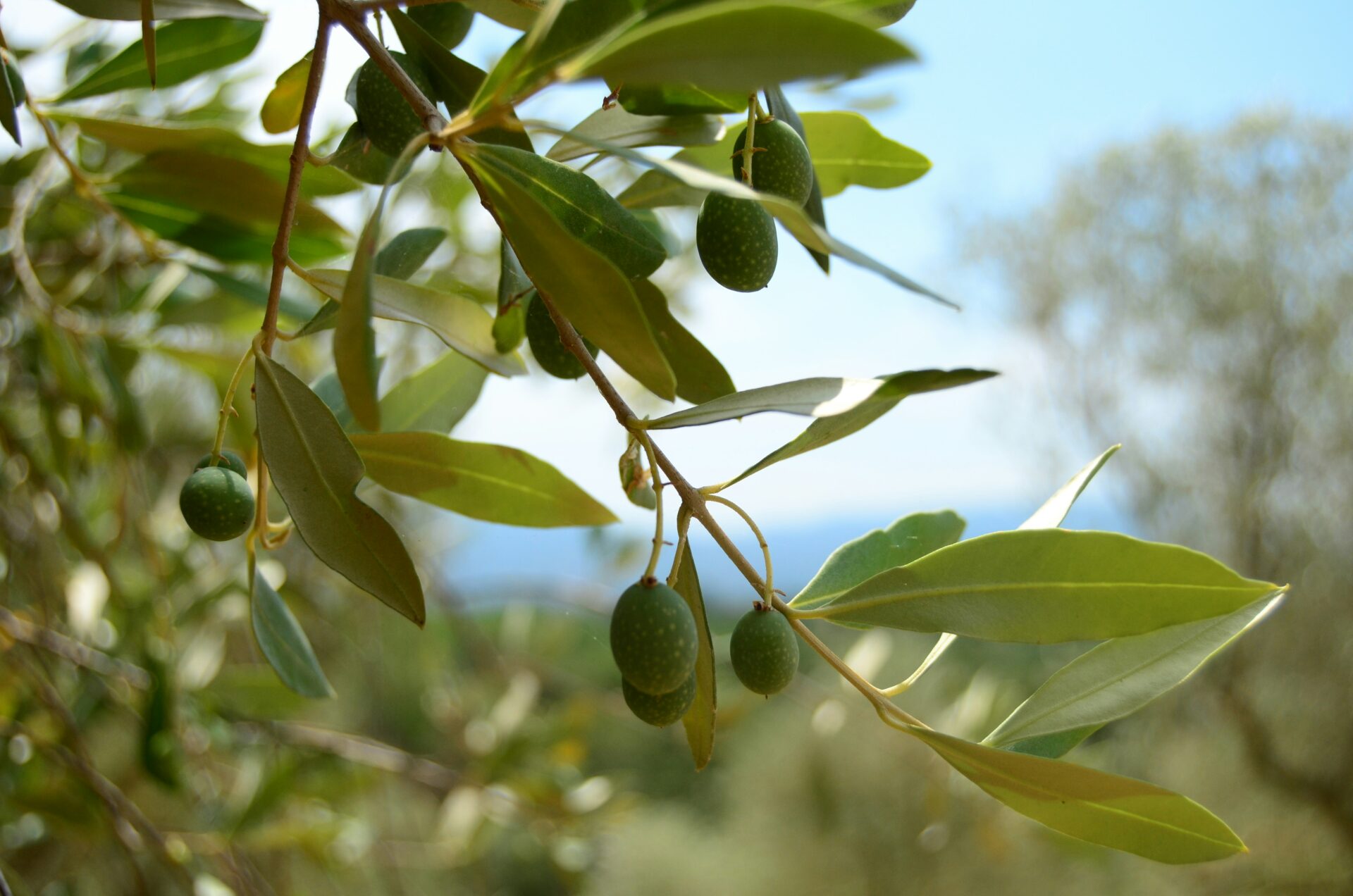
Beyond Bagno Vignoni: Discovering Nearby Attractions
While Bagno Vignoni’s thermal waters are a remarkable destination, the surrounding Tuscan region offers countless treasures waiting to be explored. From historic hillside towns to breathtaking landscapes and world-class art cities, you’ll find endless opportunities for day trips.
Medieval Towns and UNESCO Treasures
Pienza sits just 15 minutes from Bagno Vignoni. This perfect Renaissance town was redesigned by Pope Pius II and is now a UNESCO World Heritage Site. The town’s harmonious architecture and spectacular views of the countryside make it a photographer’s dream.
Montepulciano, famous for its noble wine, perches dramatically on a limestone ridge. I recommend walking the entire town from Porta al Prato up to Piazza Grande to fully appreciate its steep medieval streets and Renaissance palaces.
Siena deserves at least a full day visit. Its magnificent Piazza del Campo hosts the famous Palio horse race twice yearly. The striped cathedral contains masterpieces by Donatello and Michelangelo, while the city’s medieval contrade (districts) retain their distinct identities and traditions.
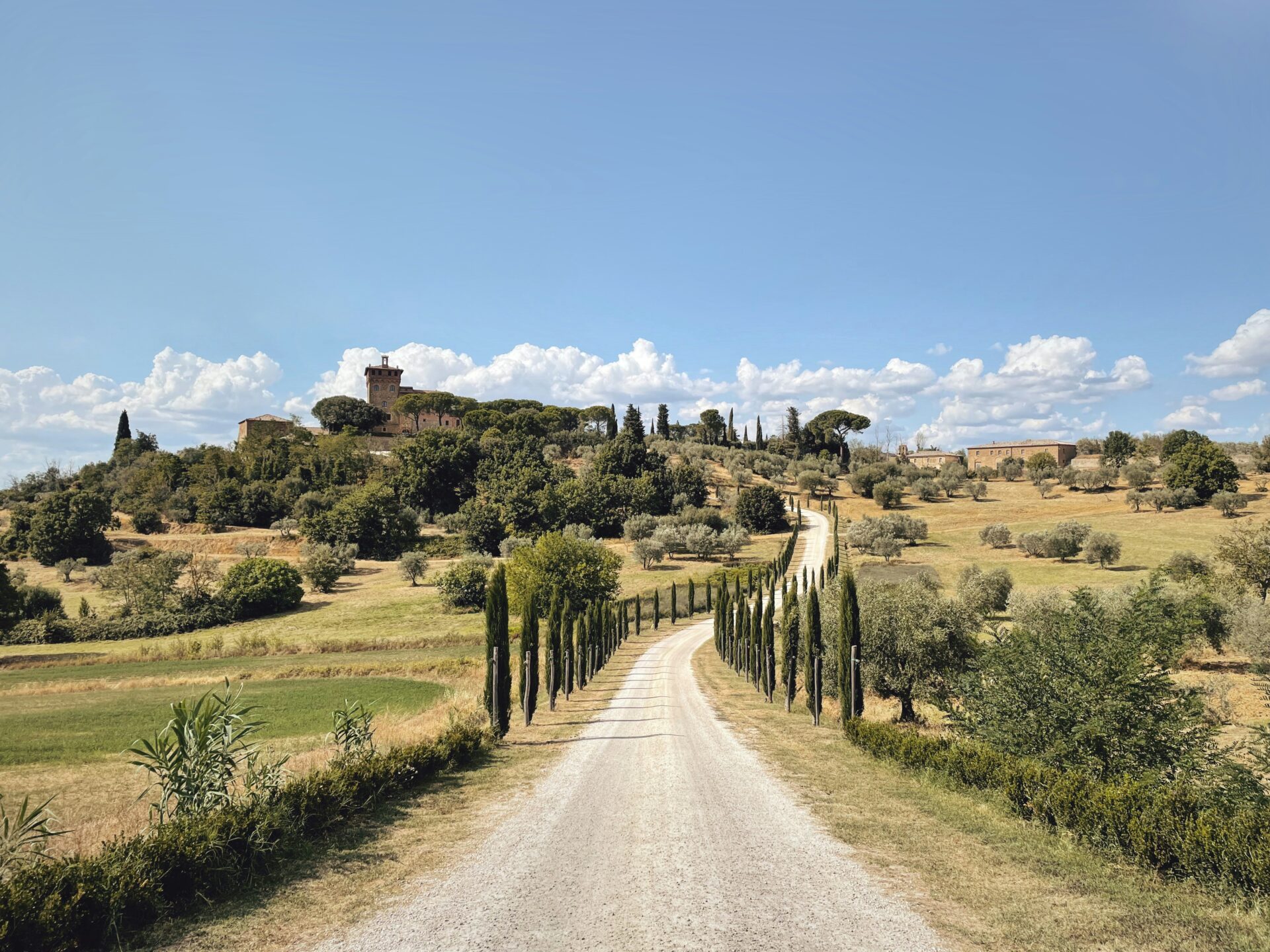
Hiking the Hills and Countryside
The rolling hills of Val d’Orcia offer some of the most iconic Tuscan landscapes you’ll ever see. Those cypress-lined roads from postcards? They’re real, and I’ve found several near La Foce estate.
The ancient Via Francigena pilgrimage route passes directly through this region. Walking even a small section provides a deeper connection to the land and its history. The stretch between San Quirico d’Orcia and Bagno Vignoni is particularly scenic and manageable for casual hikers.
For a more challenging adventure, Monte Amiata offers hiking trails through chestnut forests with sweeping views across southern Tuscany. In winter, it even becomes a modest ski resort, providing a surprising alpine experience in the heart of Tuscany.
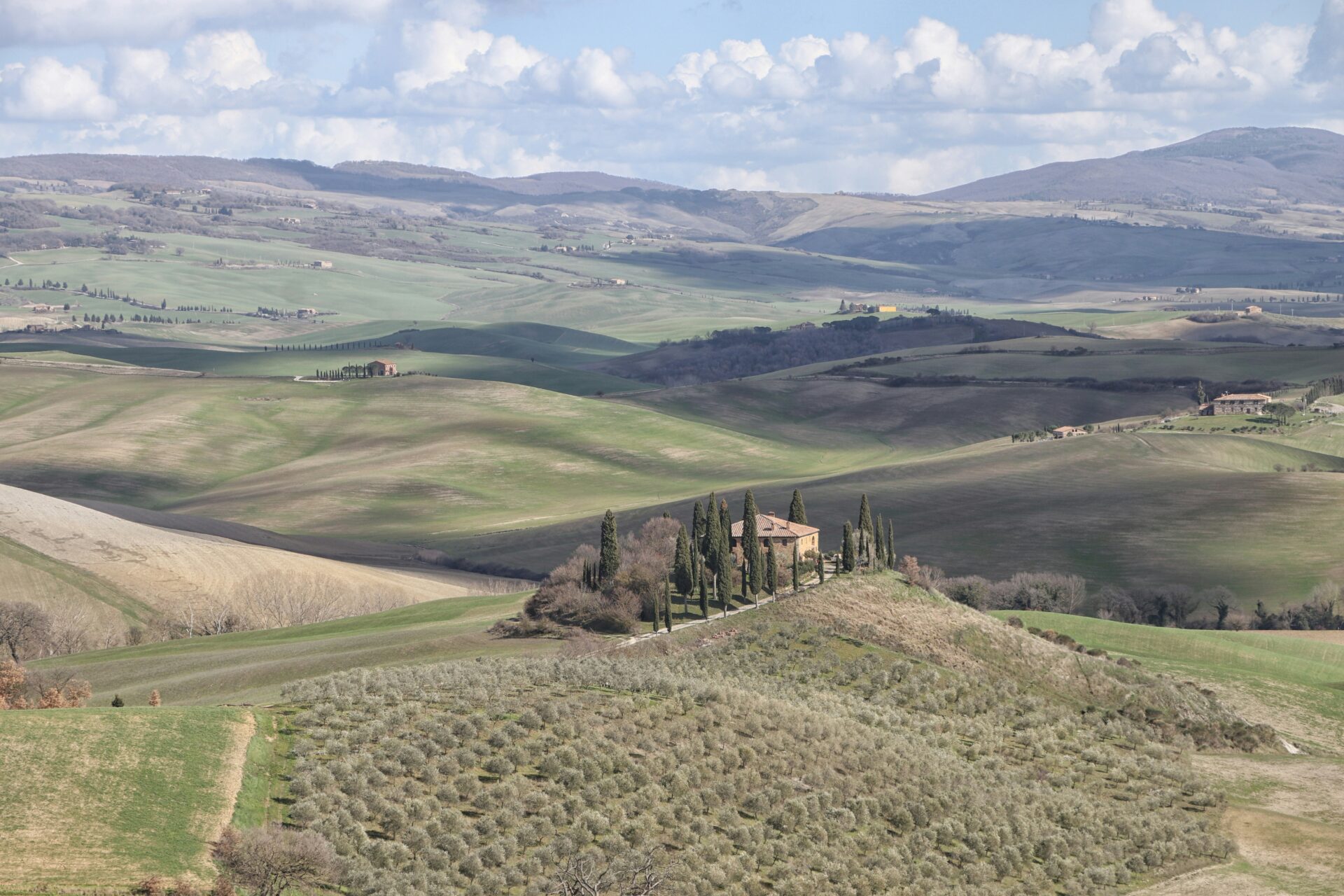
Exploring the Art Cities of Tuscany
Florence, the cradle of the Renaissance, sits about two hours north. I suggest arriving early to beat crowds at the Uffizi Gallery and Accademia (home to Michelangelo’s David). The city’s compact historic center makes it walkable. Though you’ll want comfortable shoes for those cobblestone streets.
San Gimignano is famous for its medieval towers. The town offers a skyline unlike any other Tuscan town. I always stop for the world-champion gelato at Gelateria Dondoli in the main square.
Volterra, with its Etruscan walls and Roman theater, feels less touristy than other destinations. Its alabaster workshops continue a craft tradition dating back thousands of years. The mountaintop setting provides dramatic views and a distinctive atmosphere. This feels worlds away from Bagno Vignoni’s thermal tranquility.

